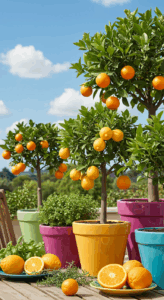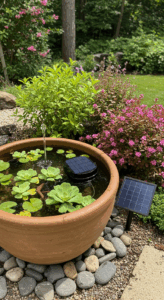1. Basil: The Perfect Companion for Flavor and Growth
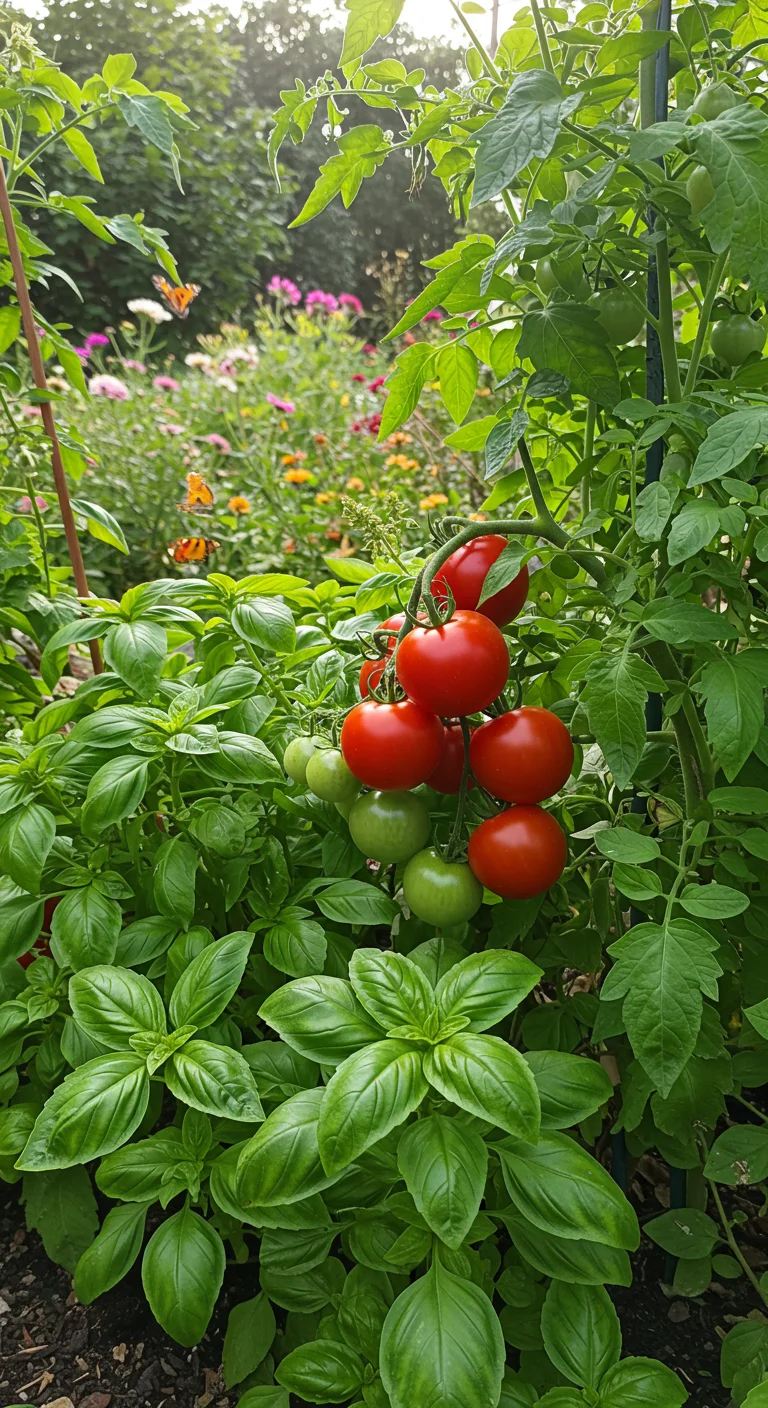
Basil is not only a culinary delight but also an excellent companion plant for tomatoes, enhancing flavor and growth. When intercropped, basil helps to repel pests like aphids and whiteflies, which are common threats to tomato plants. Additionally, it attracts beneficial insects such as pollinators and predatory wasps, creating a healthier ecosystem in your garden. The aromatic oils in basil can also mask the scent of tomatoes, making it harder for pests to locate their target. For optimal results, plant basil seedlings at least 12 inches away from tomato plants to allow for adequate airflow and sunlight. This partnership not only improves the yield of your tomatoes but also enriches the garden with the delightful scent and taste of fresh basil, making it a must-have in any vegetable patch.
2. Marigolds: Nature’s Pest Deterrent
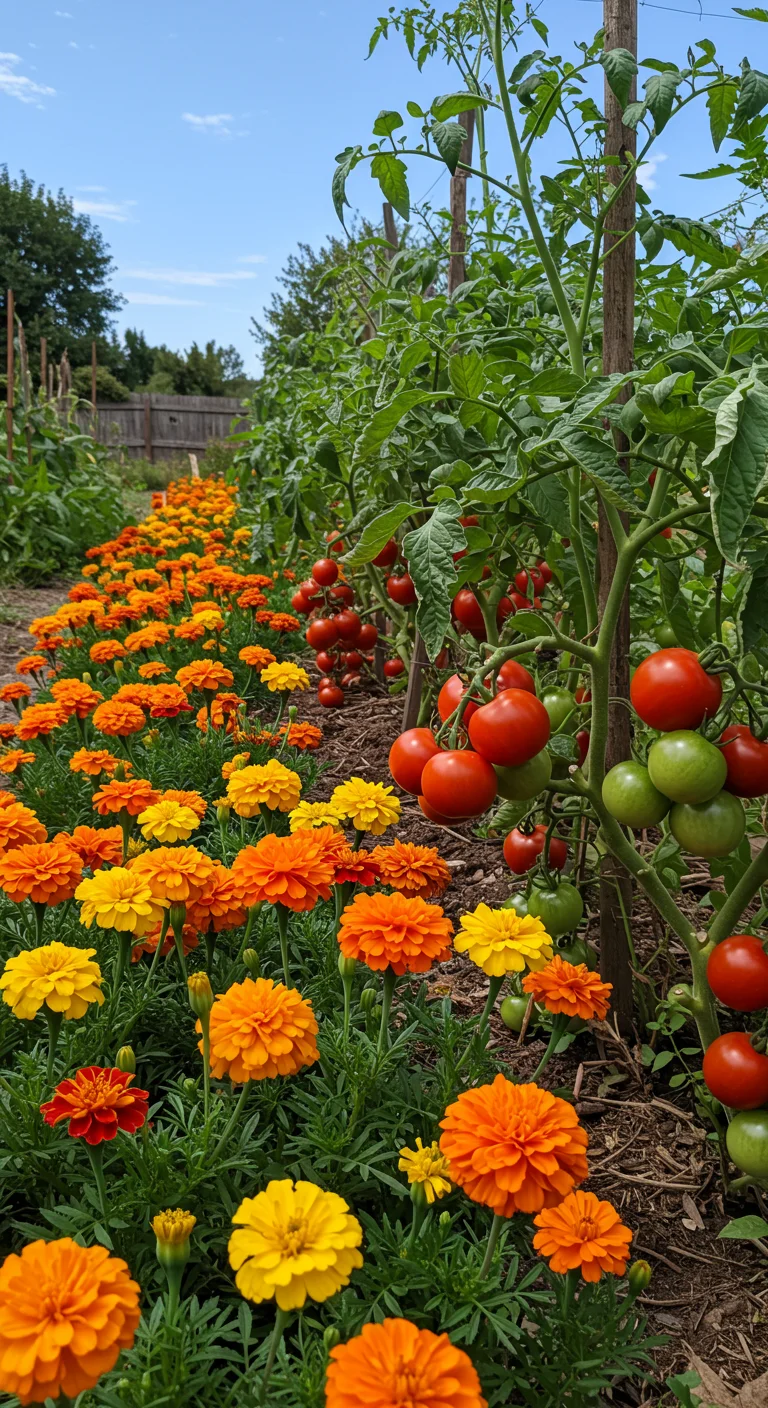
Marigolds are an excellent companion plant for tomatoes, serving as a natural pest deterrent. Their vibrant blooms release a strong scent that repels common pests such as aphids, nematodes, and whiteflies while attracting beneficial insects like ladybugs and parasitic wasps. Planting marigolds alongside your tomato plants not only enhances the garden’s aesthetic appeal but also promotes a healthier growing environment. Additionally, marigolds can help improve soil health by suppressing weeds and adding nutrients when their spent blooms decompose. For best results, intersperse marigold plants throughout your tomato rows to create a diverse and thriving ecosystem, ensuring both plants benefit from each other’s strengths and contribute to a bountiful harvest.
3. Garlic: A Natural Shield Against Pests
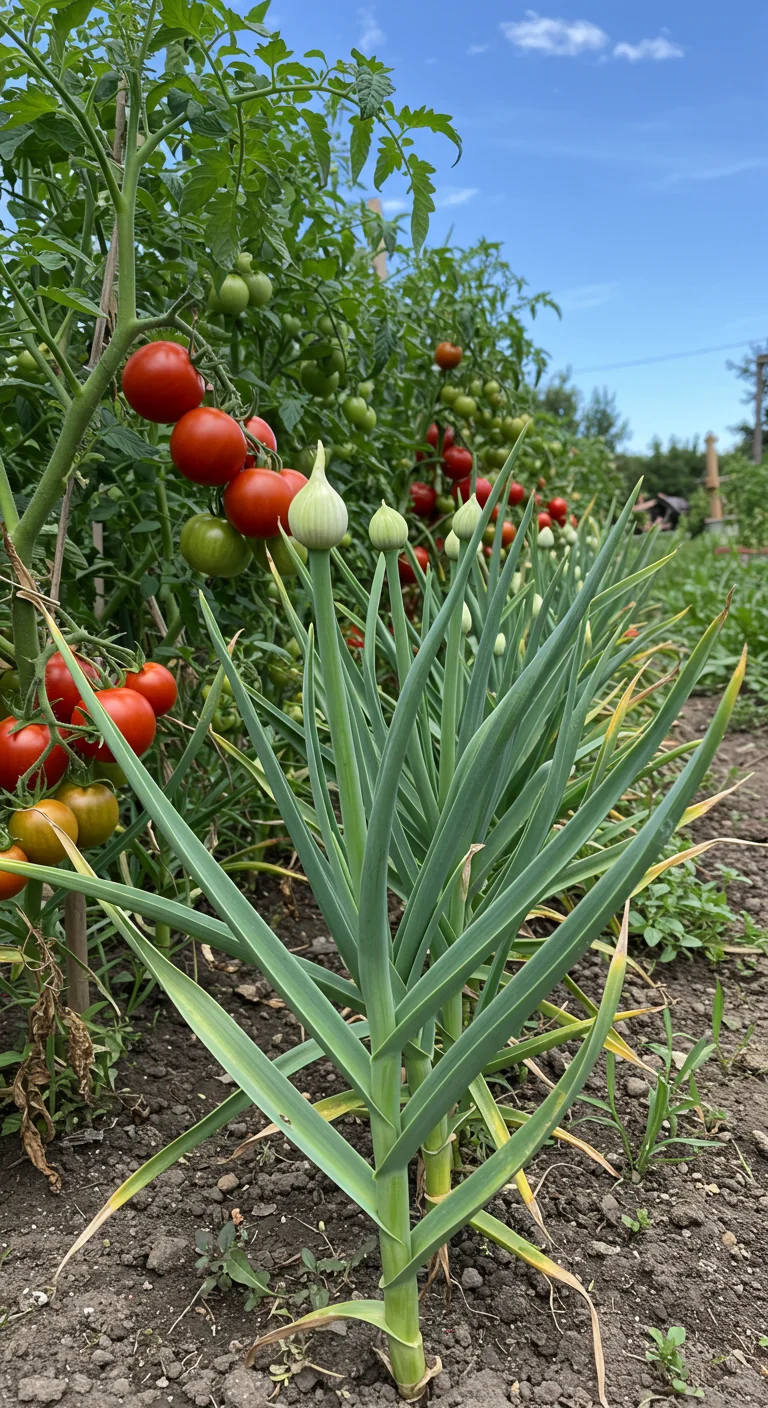
Garlic is not only a flavorful addition to many dishes but also serves as an effective natural pest deterrent when intercropped with tomatoes. Its strong scent repels a variety of pests, including aphids, whiteflies, and spider mites, which are notorious for targeting tomato plants. Planting garlic around your tomato crops can create a protective barrier, reducing the need for chemical pesticides and promoting a healthier garden ecosystem. Additionally, garlic’s growth can help improve soil health, as it naturally enhances nutrients and suppresses some soil-borne diseases. For best results, consider planting garlic cloves in the fall or early spring, ensuring they have enough space to thrive while still providing a shield to your tomato plants.
4. Spinach: The Nutrient-Rich Ground Cover
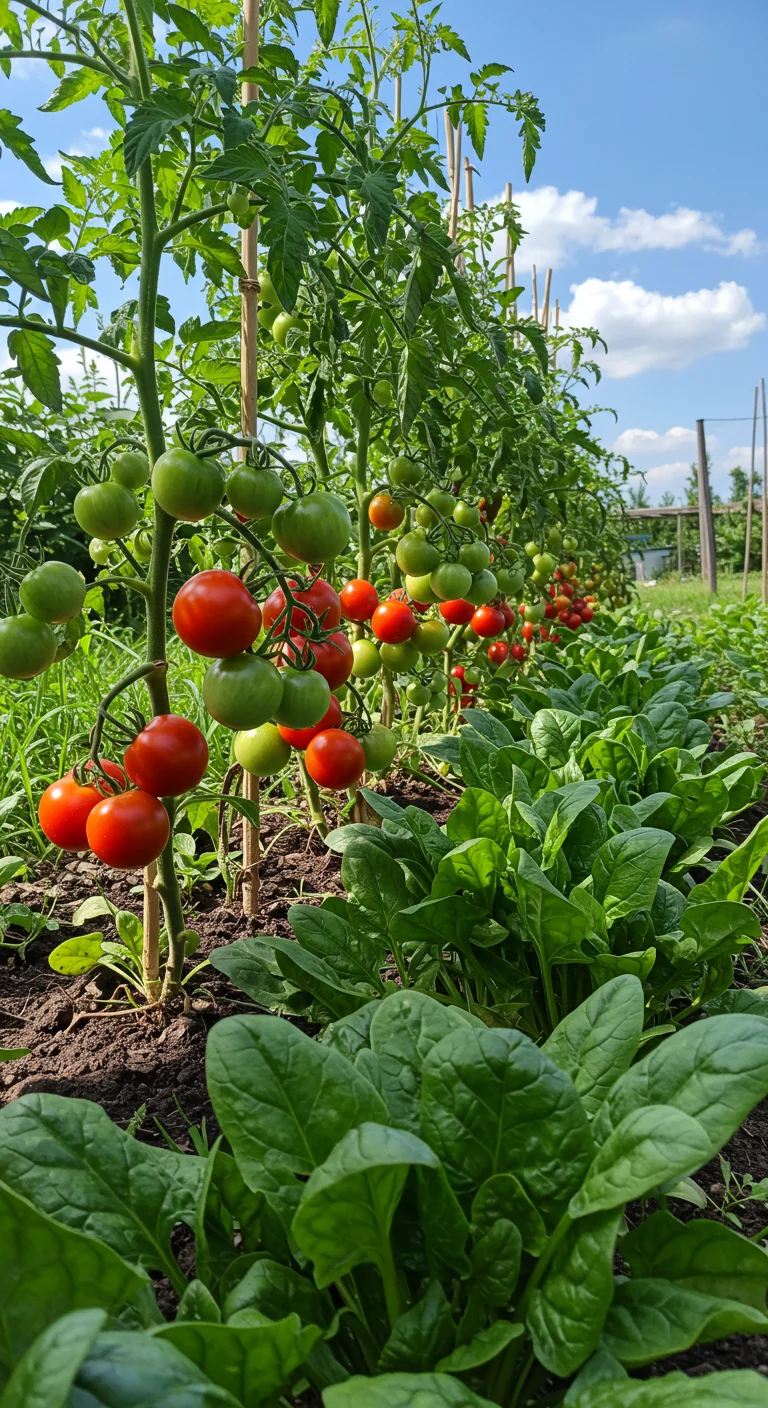
Spinach is an excellent choice for intercropping with tomatoes due to its nutrient-rich profile and rapid growth rate. This leafy green thrives in the same acidic soil conditions preferred by tomatoes, helping to optimize space and enhance soil health. Spinach can provide ground cover that suppresses weeds and retains moisture, which is particularly beneficial during the hot summer months when tomatoes are actively growing. Additionally, its dense foliage creates a microclimate that can protect tomato plants from extreme temperatures and pests. Harvesting spinach can be done in as little as 30 days, allowing for a quick turnover and continuous soil enrichment through its organic matter. Planting spinach alongside tomatoes not only maximizes yields but also contributes to a more sustainable garden ecosystem.
5. Carrots: Deep-Rooted Allies for Soil Aeration
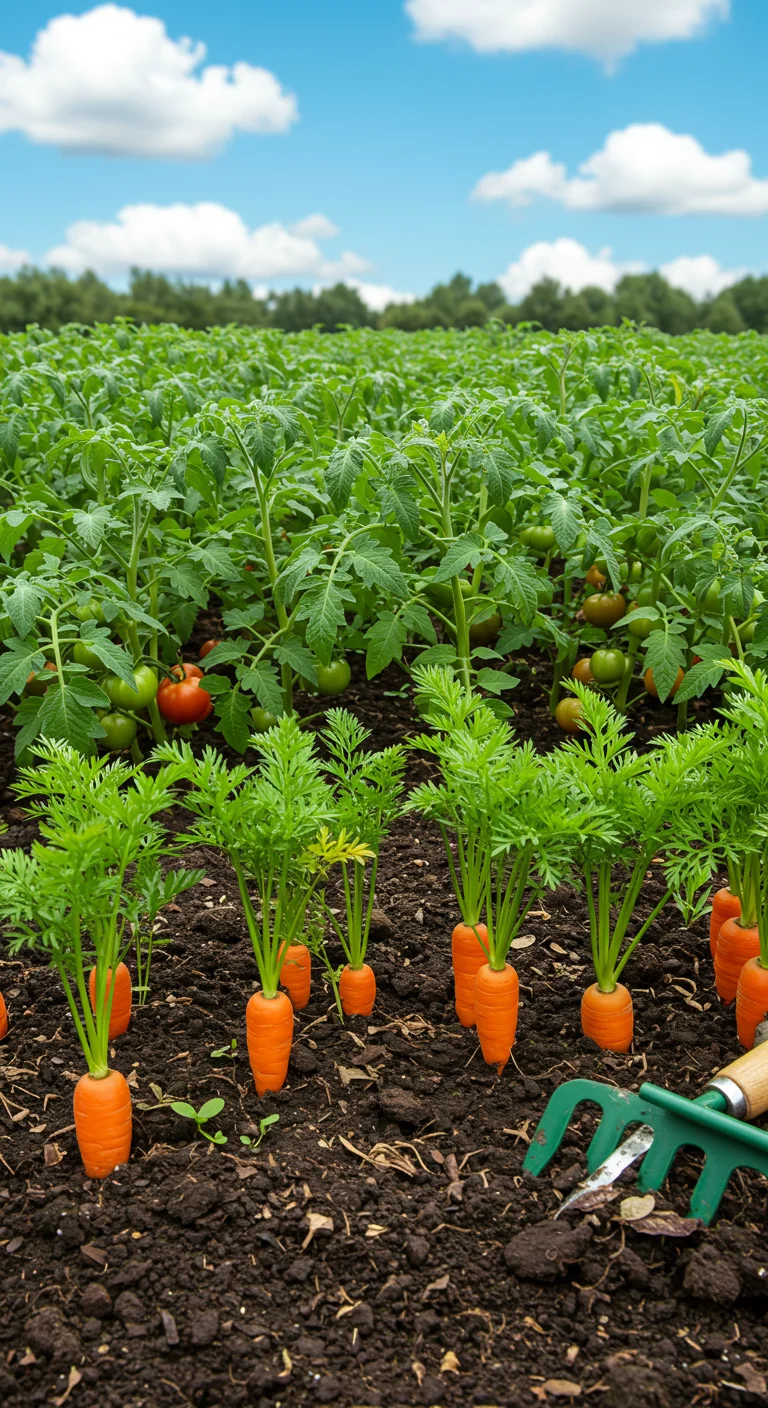
Carrots serve as excellent companions for tomatoes, primarily due to their deep taproots that effectively aerate the soil. By penetrating deeper layers of the earth, carrots loosen compacted soil, allowing for improved water penetration and nutrient availability, which benefits the shallow-rooted tomato plants. Additionally, the foliage of carrots provides shade and reduces soil temperature, creating a favorable microclimate for tomatoes. This symbiotic relationship not only enhances yield but also promotes healthier plants by minimizing soil erosion and maintaining moisture levels. When intercropped, ensure that carrots are sown a few weeks before tomatoes to allow for adequate root development, maximizing the benefits of this dynamic duo in your garden.
6. Peppers: Maximizing Vertical Space and Sunlight
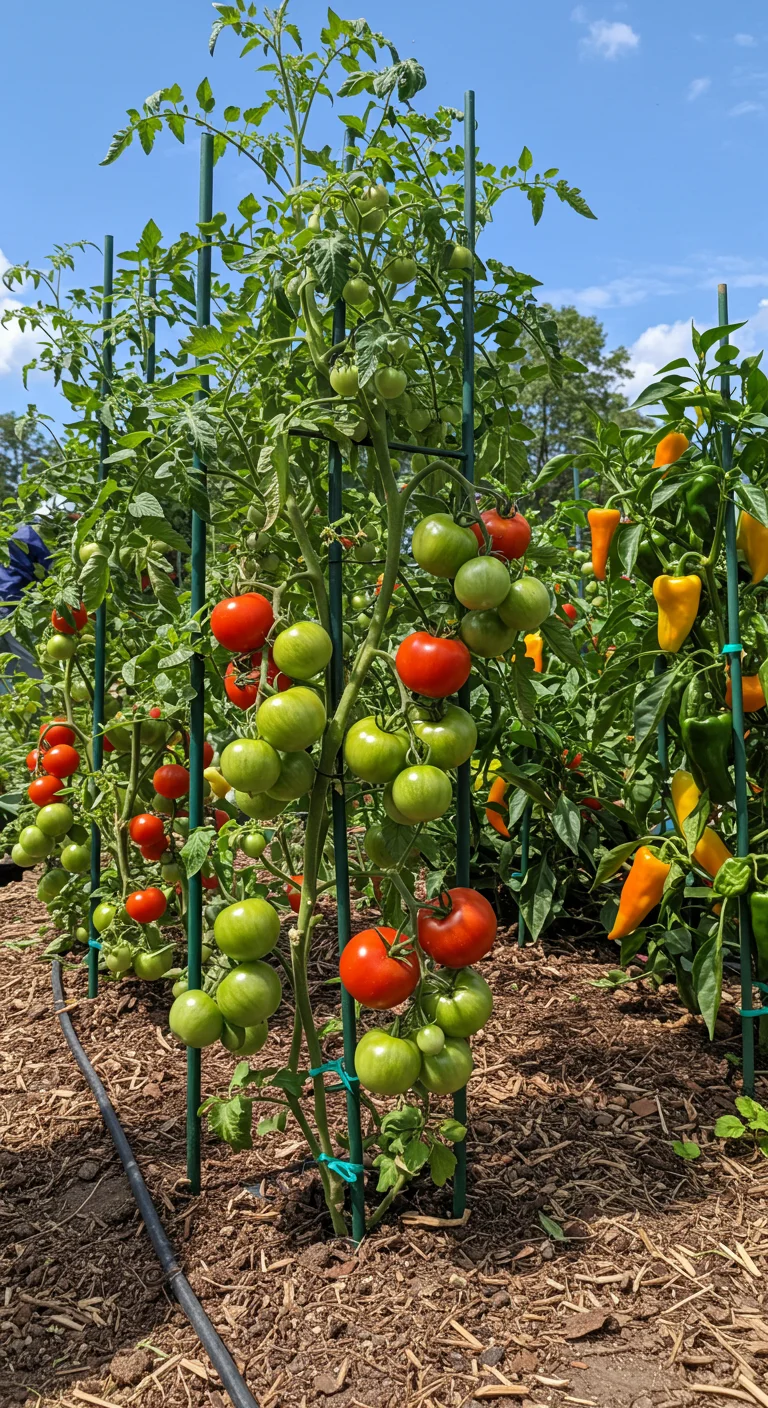
Peppers are an excellent companion for tomatoes due to their similar growing requirements and complementary growth habits. By planting peppers vertically, either using stakes or trellises, you can maximize your garden space while ensuring both plants receive ample sunlight. Peppers thrive in warm weather and benefit from the shade provided by taller tomato plants, which helps to regulate soil moisture and temperature. Additionally, their root systems do not compete aggressively with tomatoes, allowing both to flourish. When intercropping, select varieties such as bell peppers or jalapeños, which can be placed on the edges of your tomato rows, ensuring adequate airflow and preventing disease. This strategic planting not only optimizes space but also enhances yields, resulting in a bountiful harvest of both peppers and tomatoes.
7. Lettuce: Quick Harvests for Synchronized Growth
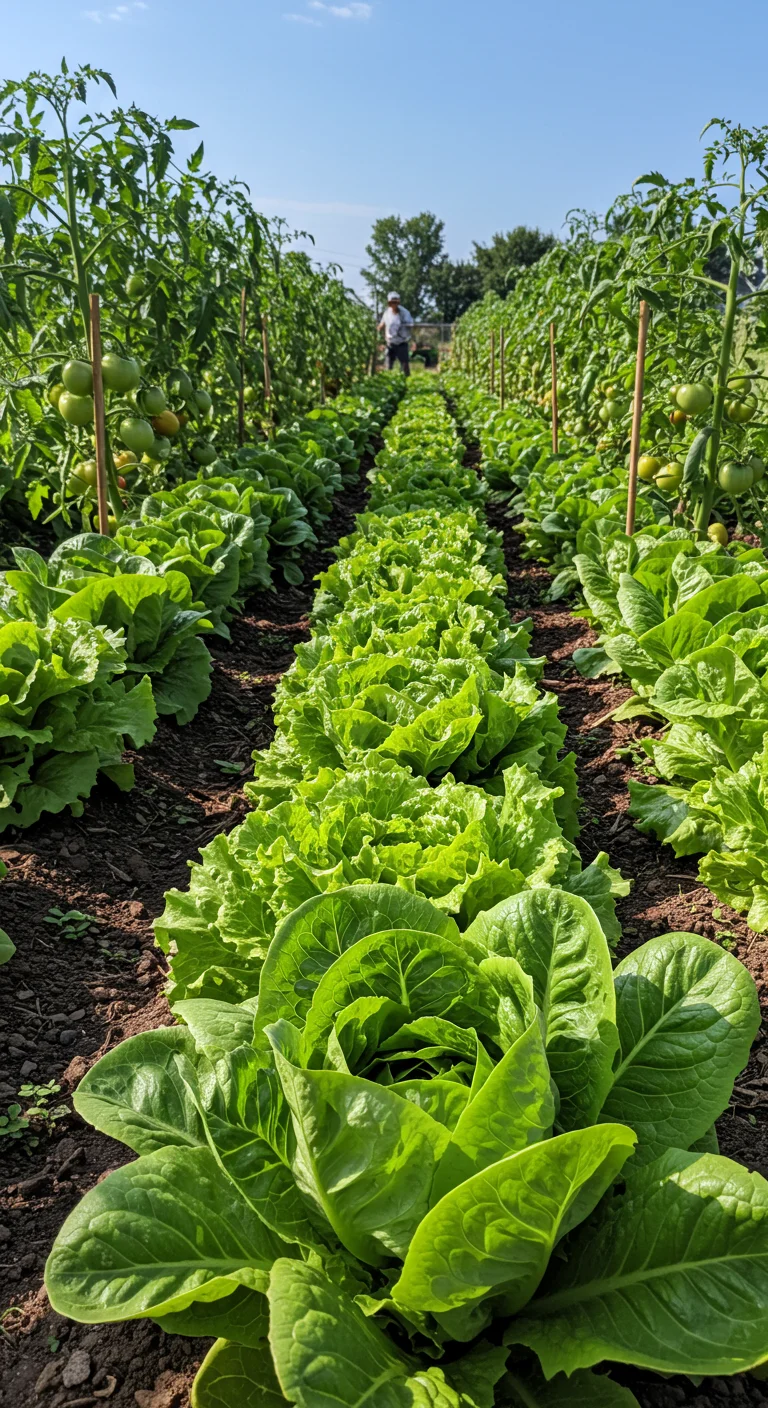
Lettuce is an excellent companion crop for tomatoes due to its quick growth cycle and shallow root system, which minimizes competition for nutrients and moisture. By planting lettuce in between tomato rows, you can effectively maximize space and achieve synchronized growth. As tomatoes begin to establish, the lettuce will thrive in the cooler weather of early spring or late summer, allowing for a bountiful harvest within weeks. This strategy not only enhances your overall yield but also helps suppress weeds and reduce soil erosion. Be sure to select fast-growing varieties like leaf or butterhead lettuce for optimal results, and remember to harvest regularly to encourage continuous growth and prevent bolting.
8. Onions: Layering Flavors and Deterring Pests

Onions are a fantastic companion plant for tomatoes, as they not only enhance flavor profiles but also serve as a natural pest deterrent. The strong aroma of onions can mask the scent of tomatoes, making it harder for pests like aphids and spider mites to locate their preferred host. In addition, the sulfur compounds released by onions can repel nematodes and other harmful soil-borne insects. Planting onions alongside tomatoes encourages a mutually beneficial relationship where both plants can thrive; onions benefit from the nitrogen-rich soil that tomatoes produce while tomatoes enjoy the protection from pests. For optimal results, plant onions in alternating rows or around the perimeter of your tomato patch to maximize their protective benefits.
9. Nasturtiums: Edible Flowers that Attract Beneficial Insects
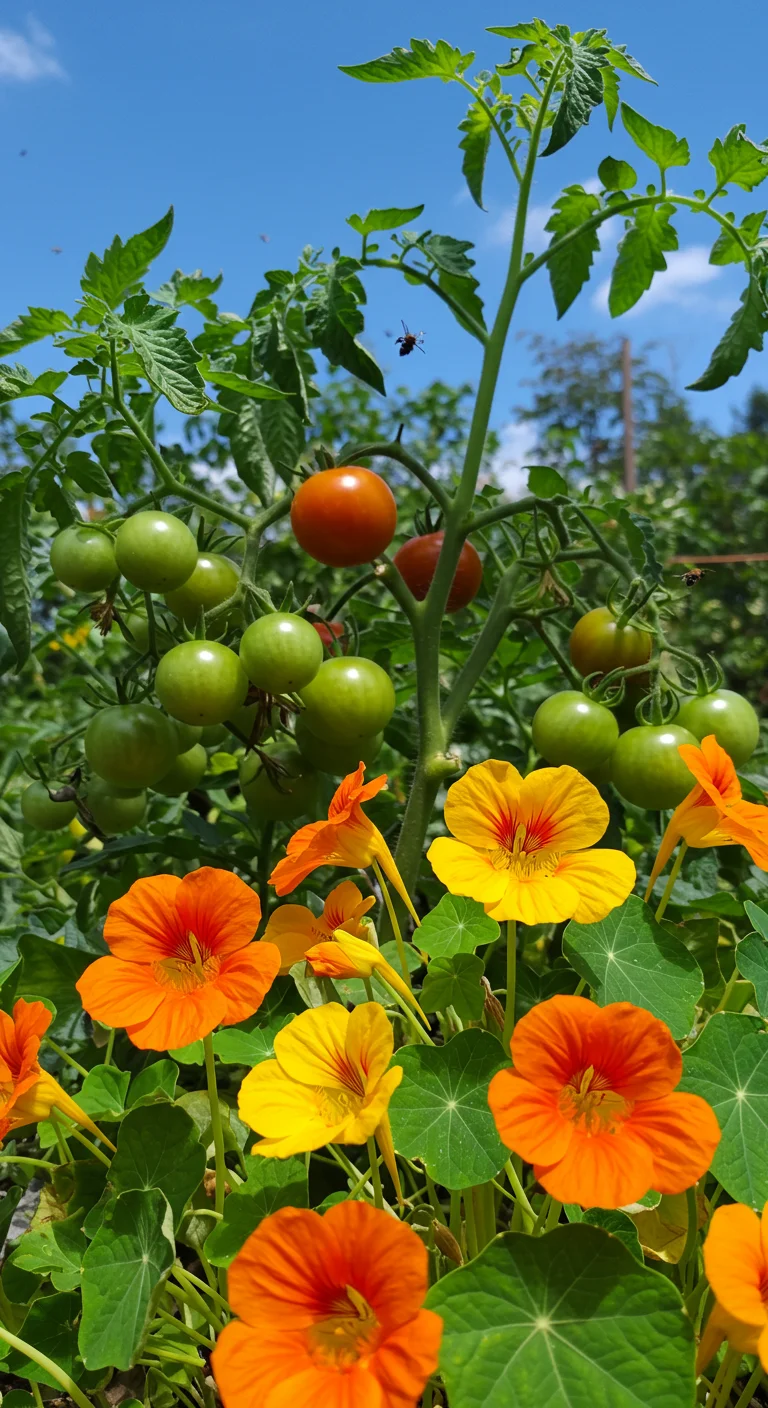
Nasturtiums are not only beautiful, but they also serve as a fantastic companion plant for tomatoes, enhancing both your garden’s aesthetics and its ecological health. Their vibrant flowers and foliage are entirely edible, adding a peppery flavor to salads and dishes while attracting beneficial insects like pollinators and predatory wasps. These insects help in controlling pests such as aphids and caterpillars, thus reducing the need for chemical interventions. Planting nasturtiums around your tomato plants can also improve soil health by acting as a trap crop, drawing pests away from your tomatoes. Additionally, their deep roots can help break up compacted soil, promoting better aeration and moisture retention, which is vital for hearty tomato growth.
10. Cabbage: A Hardy Neighbor for Tomato Plants
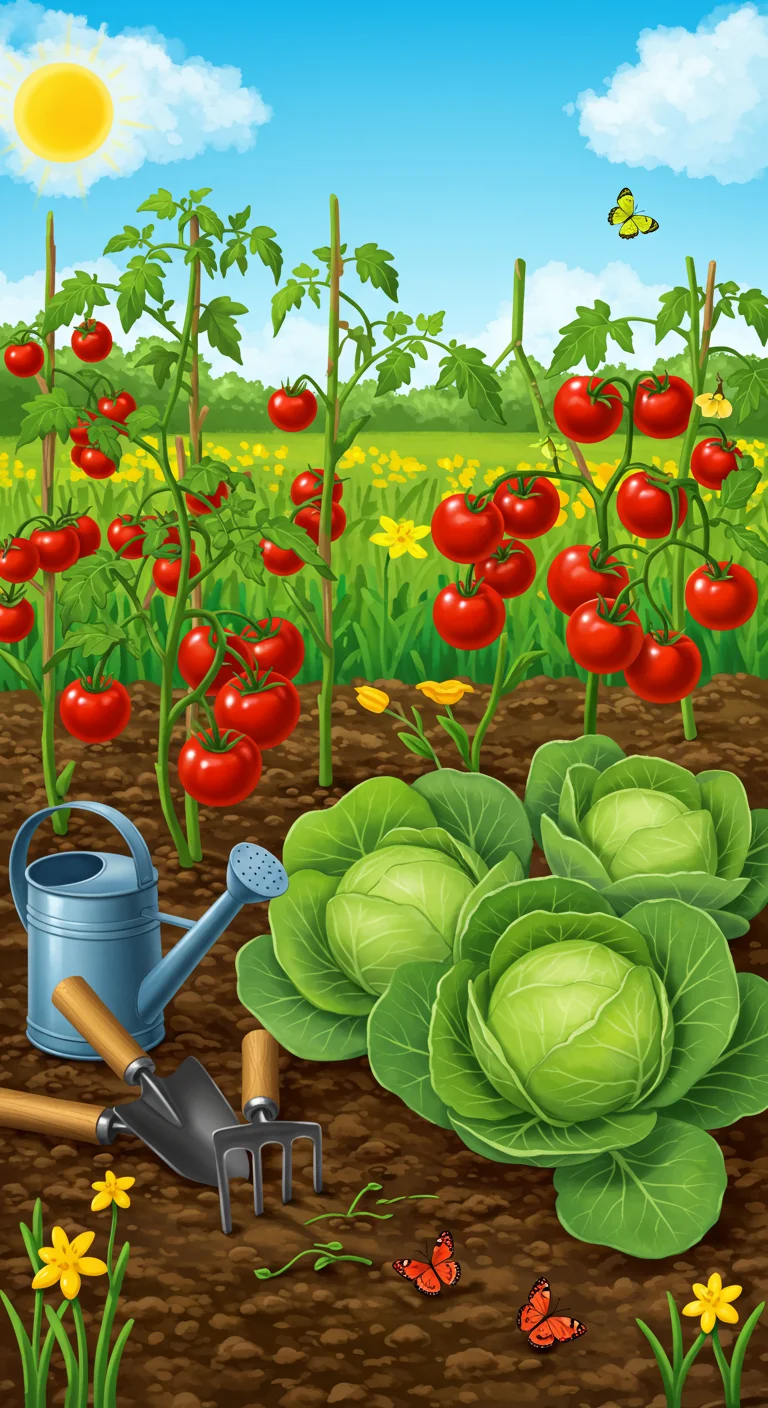
Cabbage is an excellent companion plant for tomatoes, offering both benefits for soil health and pest management. As a hardy leafy green, cabbage thrives in similar conditions to tomatoes, such as full sun and well-drained soil, making it an ideal neighbor in the garden. When intercropped, cabbage can help suppress weeds that might compete with tomatoes for nutrients. Additionally, its dense foliage can provide some shade to tomato plants during the hottest parts of the day, which can be particularly beneficial in warmer climates. Moreover, cabbage can deter certain pests, such as aphids, that may threaten tomato plants, promoting a healthier garden ecosystem. For best results, space cabbage plants adequately to prevent overcrowding and ensure good air circulation around the tomato plants.
11. Beans: Nitrogen Fixers for Soil Health
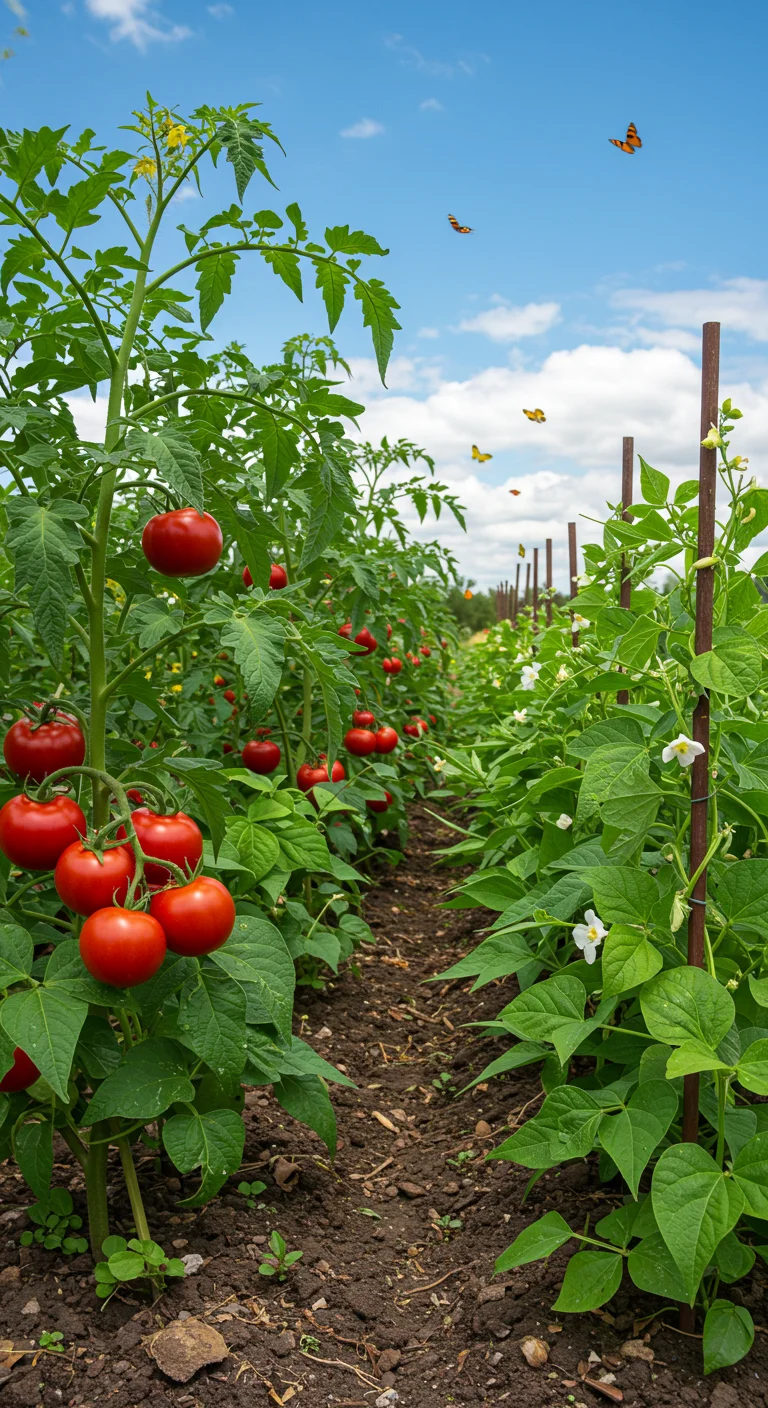
Beans are exceptional companions for tomatoes, serving as natural nitrogen fixers that enhance soil health. By forming symbiotic relationships with rhizobia bacteria, beans convert atmospheric nitrogen into a form that plants can easily access. This process not only enriches the soil but also benefits the adjacent tomato plants, leading to improved growth and fruit yield. Additionally, beans can help suppress weeds and reduce soil erosion, creating a more sustainable garden ecosystem. Planting bush or pole varieties of beans alongside tomatoes allows for efficient use of vertical space while promoting healthy soil conditions. For optimal results, consider staggering planting times to ensure that both plants can thrive without competition for resources.
12. Radishes: Fast-Growing Friends That Loosen Soil
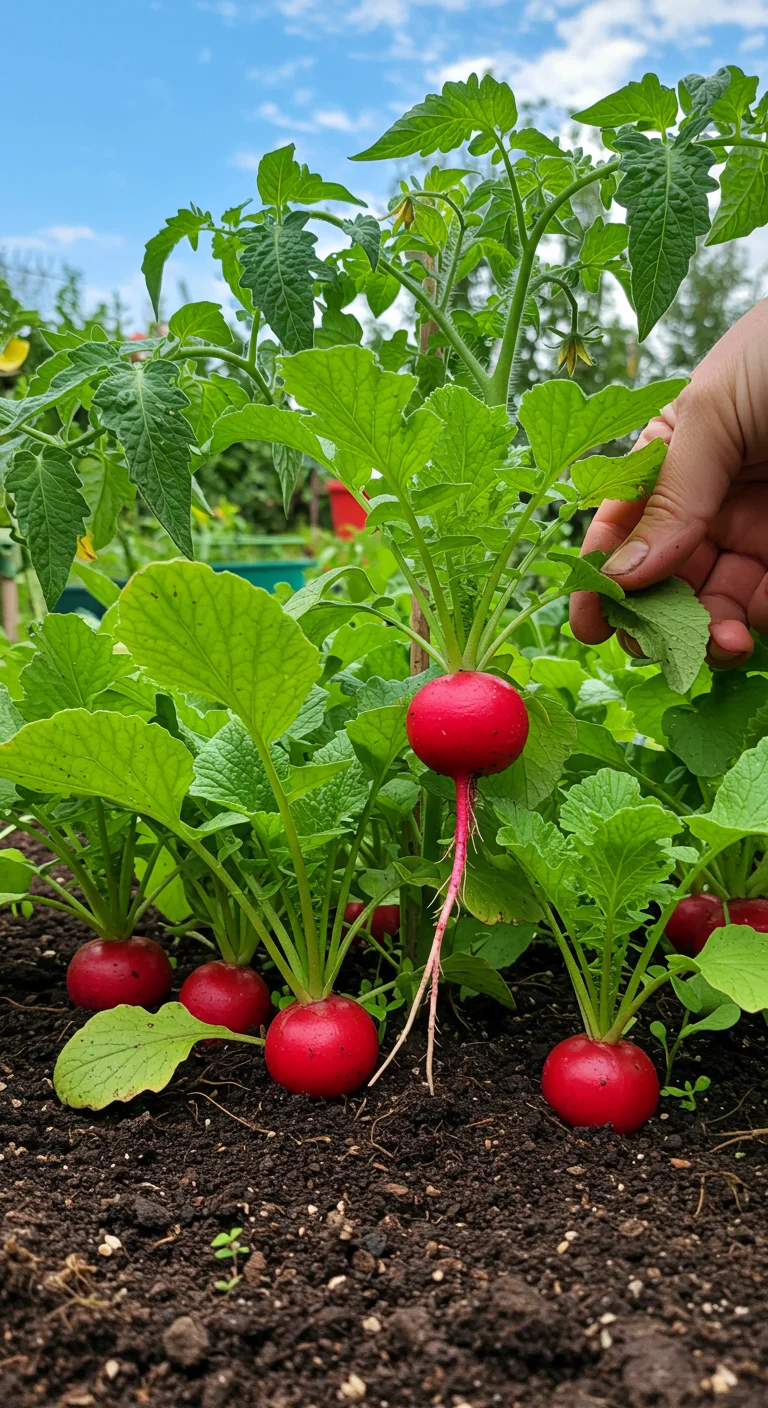
Radishes are an excellent choice for intercropping with tomatoes due to their rapid growth and ability to improve soil structure. Typically maturing within three to four weeks, radishes can be sown alongside tomato plants, providing a quick harvest before the tomatoes fully mature. Their extensive root systems naturally aerate the soil, loosening compacted earth and allowing better water and nutrient absorption for the tomato plants. Additionally, radishes can help suppress weeds, reducing competition for resources. To maximize benefits, consider planting varieties like ‘Easter Egg’ or ‘Cherry Belle’ that thrive in varying conditions, ensuring a steady supply of fresh, crispy radishes while fostering a healthier growing environment for your tomatoes.




